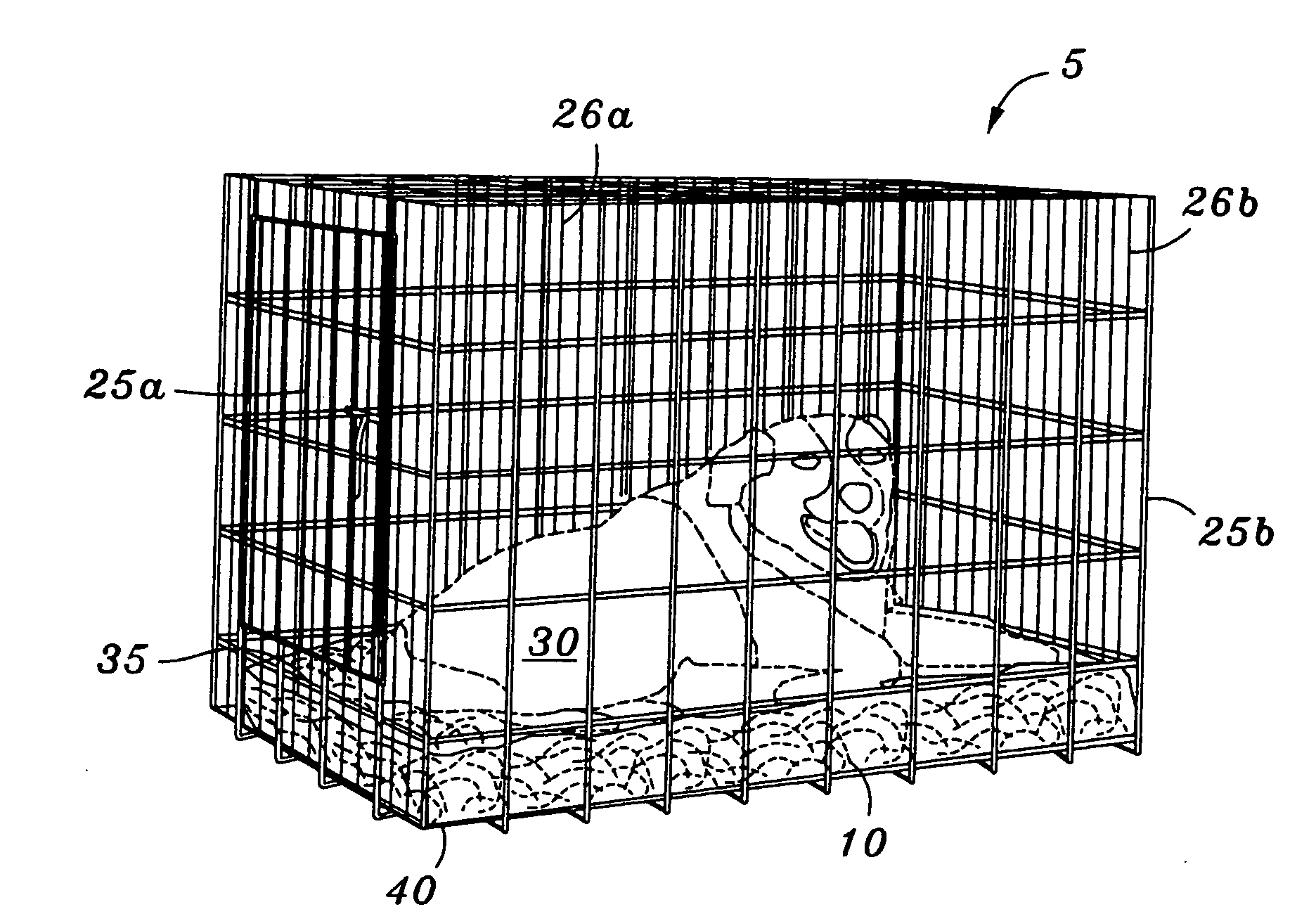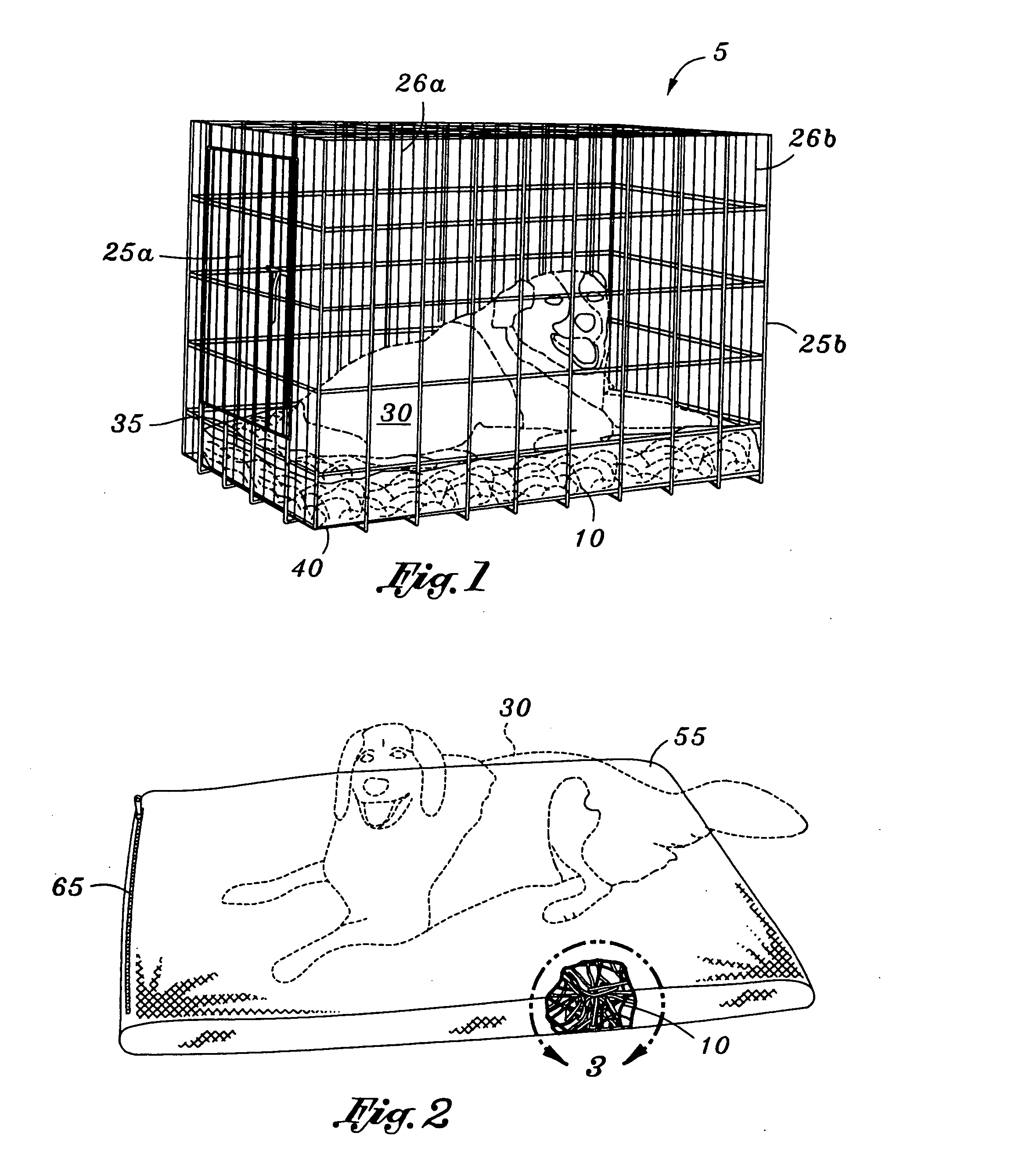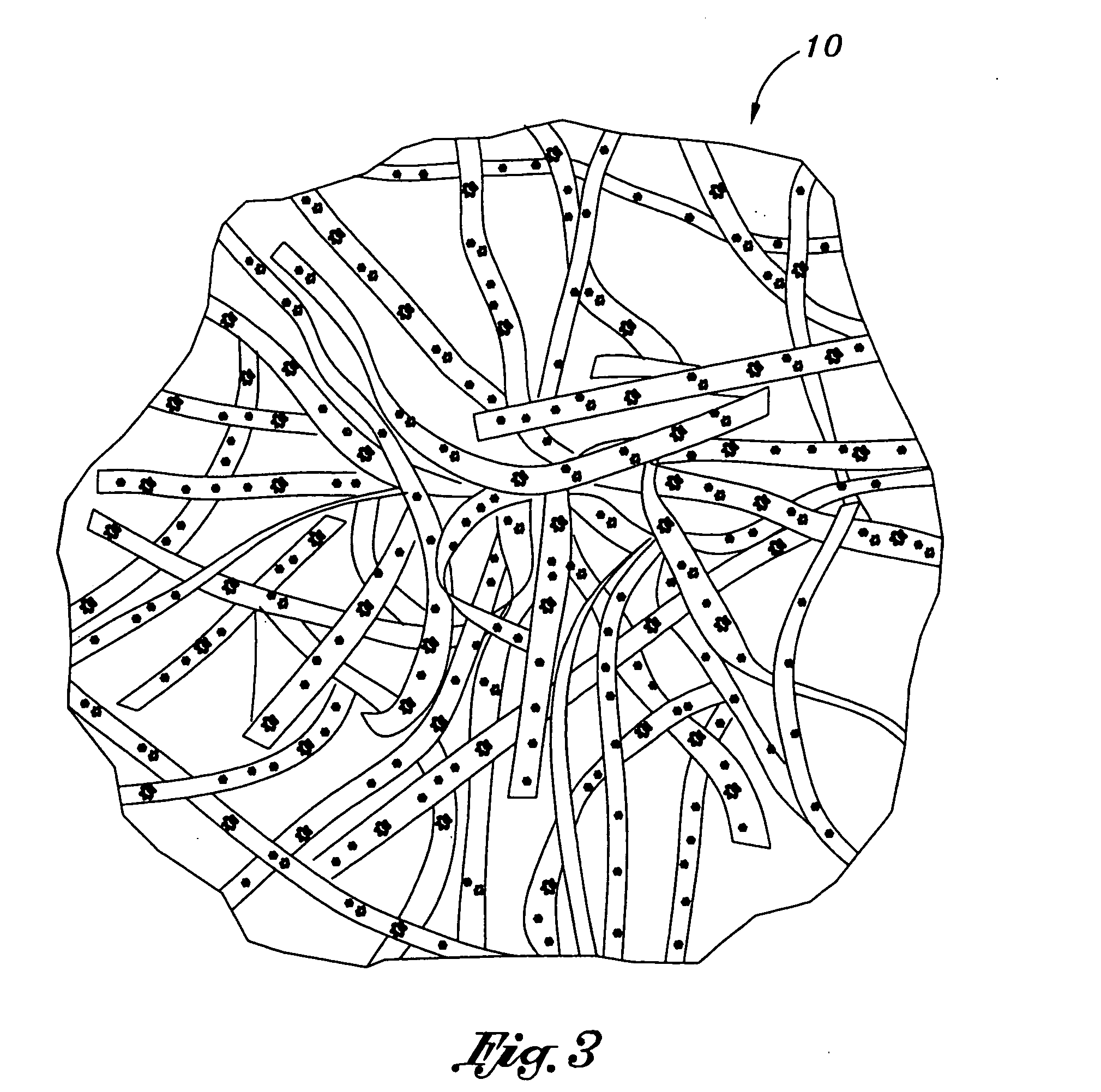Animal shred
a technology for animals and shreds, applied in the field of animal shreds, can solve the problems of pine shavings being harmful to animals and humans, affecting the quality of bedding materials, allergic reactions, etc., and achieves the effects of less dust, higher paper weight, and less dus
- Summary
- Abstract
- Description
- Claims
- Application Information
AI Technical Summary
Benefits of technology
Problems solved by technology
Method used
Image
Examples
Embodiment Construction
[0020]FIG. 1 represents a perspective view of an enclosure 5, containing a shred 10, as further described herein, and further containing a confined animal 30. Although the enclosure 5 shown in FIG. 1 is a portable enclosure, it can be appreciated by one skilled in the art that the shred 10 may be utilized in association with any type of enclosure 5, such as an enclosure 5 that is integral with a wall or other part of a building structure. The enclosure 5 shown in FIG. 1 has a welded wire construction, but the enclosure 5 may be constructed of any material that is sufficiently sturdy to restrain an animal 30, including but not limited to plastic or steel. The enclosure 5 shown in FIG. 1 is a cage having a top panel 20, two pairs of opposing side walls 25a, 25b and 26a and 26b, and a floor 35 that is elevated above a bottom panel 40 of the enclosure. The top 20, the sides 25a, 25b, 26a and 26b and the floor 35 define an interior of the enclosure 5 in which an animal 30 may be restrain...
PUM
 Login to View More
Login to View More Abstract
Description
Claims
Application Information
 Login to View More
Login to View More - R&D
- Intellectual Property
- Life Sciences
- Materials
- Tech Scout
- Unparalleled Data Quality
- Higher Quality Content
- 60% Fewer Hallucinations
Browse by: Latest US Patents, China's latest patents, Technical Efficacy Thesaurus, Application Domain, Technology Topic, Popular Technical Reports.
© 2025 PatSnap. All rights reserved.Legal|Privacy policy|Modern Slavery Act Transparency Statement|Sitemap|About US| Contact US: help@patsnap.com



